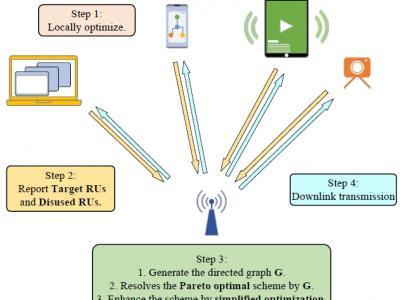internet of things
Distributed-Optimization with Centralized-Refining (DO-CR) mechanism to achieve more efficient resource allocation by engaging both access point and all devices. Specifically, the new DO-CR mechanism first utilizes the distributed processing capacity of all devices, allowing them to optimize their own resource allocation schemes through a new resource reservation and reporting technique. Then a centralized optimizer generates a graph of resource trading topology based on individual optimization results and achieves the Pareto optimal solution by the graph-based algorithm.
- Categories:
 92 Views
92 ViewsPrivacy perception refers to the control individuals have over the use of their data, including determining who can access, share, and utilize it without interference or intrusion. In the context of the Internet of Things (IoT), particularly in Smart Home Data Monetization (SH-DM), users’ data is aggregated and made available to potential service providers to target end users with personalized advertisements.
- Categories:
 228 Views
228 Views
The Integrated Energy Management and Forecasting Dataset is a comprehensive data collection specifically designed for advanced algorithmic modeling in energy management. It combines two distinct yet complementary datasets - the Energy Forecasting Data and the Energy Grid Status Data - each tailored for different but related purposes in the energy sector.
- Categories:
 1264 Views
1264 Views
This quantitative correlational research study aimed to investigate the factors affecting the implementation of zero-trust security and multifactor authentication (MFA) in a fog computing environment. Fog computing is an emerging decentralized technology that extends cloud computing capabilities near the user. A fog computing environment helps in faster communication with the internet of things (IoT) devices and reduces data transmission overheads.
- Categories:
 331 Views
331 Views
This dataset contains full details of the use case scenarios. Those can be used for effort elicitation using the adapted Use Case Points method. Despite the extensive use of UCP in software engineering, it has yet to be adapted for IoT systems, which is essential for project management and resource planning. Our proposed adaptation, UCP for IoT, is based on a four-layer IoT architecture and tailors the standard software UCP to the specifications of IoT systems.
- Categories:
 122 Views
122 ViewsThis dataset consists of “.csv” files of 4 different routing attacks (Blackhole Attack, Flooding Attack, DODAG Version Number Attack, and Decreased Rank Attack) targeting the RPL protocol, and these files are taken from Cooja (Contiki network simulator). It allows researchers to develop IDS for RPL-based IoT networks using Artificial Intelligence and Machine Learning methods without simulating attacks. Simulating these attacks by mimicking real-world attack scenarios is essential to developing and testing protection mechanisms against such attacks.
- Categories:
 1979 Views
1979 ViewsThis dataset is hosted on IEEE DataPort(TM), a data repository created by IEEE to facilitate research reproducibility. A Systematic Literature Review SLR is presented on information retrieval for IoT and WoT scenarios, containing the definition of the research questions and the selection strategy. We specify the inclusion and exclusion criteria in conjunction with the quality assurance criteria. The data extraction procedure is then outlined.
- Categories:
 211 Views
211 ViewsSupplementary material for the article "A Sensor Network Utilizing Consumer Wearables for Telerehabilitation of Post-acute COVID-19 Patients": (1) TERESA (TEleREhabilitation Self-training Assistant) back-end application API documentation and (2) anonymous details of the Wristband protocols used in the study.
- Categories:
 189 Views
189 Views
In this paper, we consider that the unmanned aerial vehicles (UAVs) with attached intelligent reflecting surfaces (IRSs) play the role of flying reflectors that reflect the signal of users to the destination, and utilize the power-domain non-orthogonal multiple access (PD-NOMA) scheme in the uplink. We investigate the benefits of the UAV-IRS on the internet of things (IoT) networks that improve the freshness of collected data of the IoT devices via optimizing power, sub-carrier, and trajectory variables, as well as, the phase shift matrix elements.
- Categories:
 486 Views
486 Views



